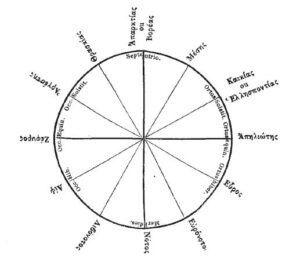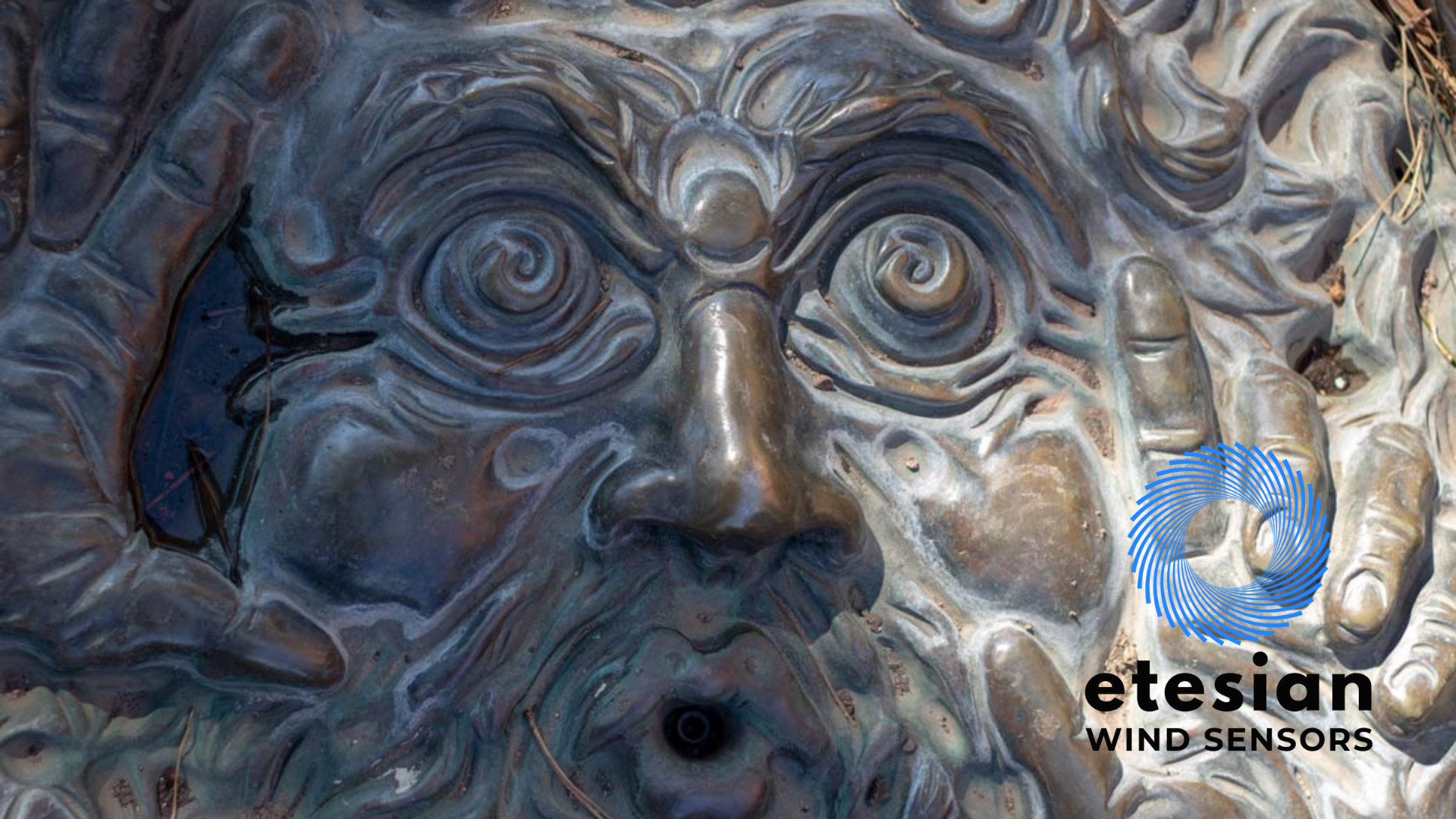Wind is and has always been a mystery.
Since the beginning of time humans have tried to understand the wind as well as capture its power and obtain some level of mastery of it.
In various ways wind is responsible for the beginning of civilization as we know it. The ancient Greeks, Persians, and Phoenicians were renowned masters of sailing and navigation and depended on the wind as their main power source for sailing across the oceans. Whether the impetus for these ancient cultures’ sailing was trade, war, or pure exploration— and sometimes all of these at the same time— the wind was what drove them forward— it was their most precious resource and their greatest ally, but when it became unruly it could also be their worst enemy and mortal threat.

Phoenician ship carved on the face of a sarcophagus. 1500 BCE – 332 BCE
To the ancients the wind was a mysterious phenomenon of nature that was only truly defined by the great duality of its effect. Indispensable as a source of power for their ships when it blew steadily, yet nightmarish in the havoc and death it could bring when it became too powerful and volatile.
Hesiod, in his poem Theogony discusses the duality of the wind, writing,
Notus and Boreas and clear Zephyr, these are a god-sent kind, and a great blessing to men; but the other winds blow fitfully upon the seas. Some rush upon the misty sea and work great havoc among men with their evil, raging blasts; for varying with the season they blow, scattering ships and destroying sailors. And men who meet these upon the sea have no help against the mischief. Others again over the boundless, flowering earth spoil the fair fields of men who dwell below, filling them with dust and cruel uproar.
In an attempt to understand the great mystery of the wind the Greeks personified the wind (or winds) as four separate gods each representing one of the four cardinal directions from which they came: north, south, east, and west. These gods were called the Anemoi (“Winds) — anemos is the Greek word for wind and is where we get the word “anemometer” (Gr. anemos metros) translated literally as “measure wind”— and were children of Astraeus, the Keeper of the Winds, and Eos, the goddess of the dawn. The four gods were Boreas (north wind), Notus (south wind), Zephyrus (west wind) and Eurus (east wind). At times, the winds were represented as men, sometimes winged. The classical sources for the Anemoi are Homer’s Odyssey, Hesiod’s Theogony (as seen in the long quotation above), and Ovid’s Metamorphoses.

Wind rose of ancient Greece, created by the scholar Adamantios Korais around 1796
According to these sources, Boreas was often described as a bearded old man with wings, who held a conch shell. He was closely associated with winter, as he was the bringer of cold and low temperatures. Notus was linked to the hot wind that would blow after midsummer, causing the crops to burn and bringing the bad weather of late summer. Eurus was considered to be an unlucky east wind, bringing rain and warm temperatures. Zephyrus was thought to live in a cave in the region of Thrace, and was considered the gentlest wind of the four, closely linked to spring. It was also believed that he was responsible for the blooming of the lands.
Just as the ancients attempted to understand the wind through personification and myth, so to do we seek to understand it through our technological devices such as anemometers. While we have gotten very good at measuring wind speed and direction in the modern world of wireless anemometers, it is important to remember that although our knowledge of the wind is always increasing, we will never understand it completely and that to a great extent it will always remain mysterious to us.





